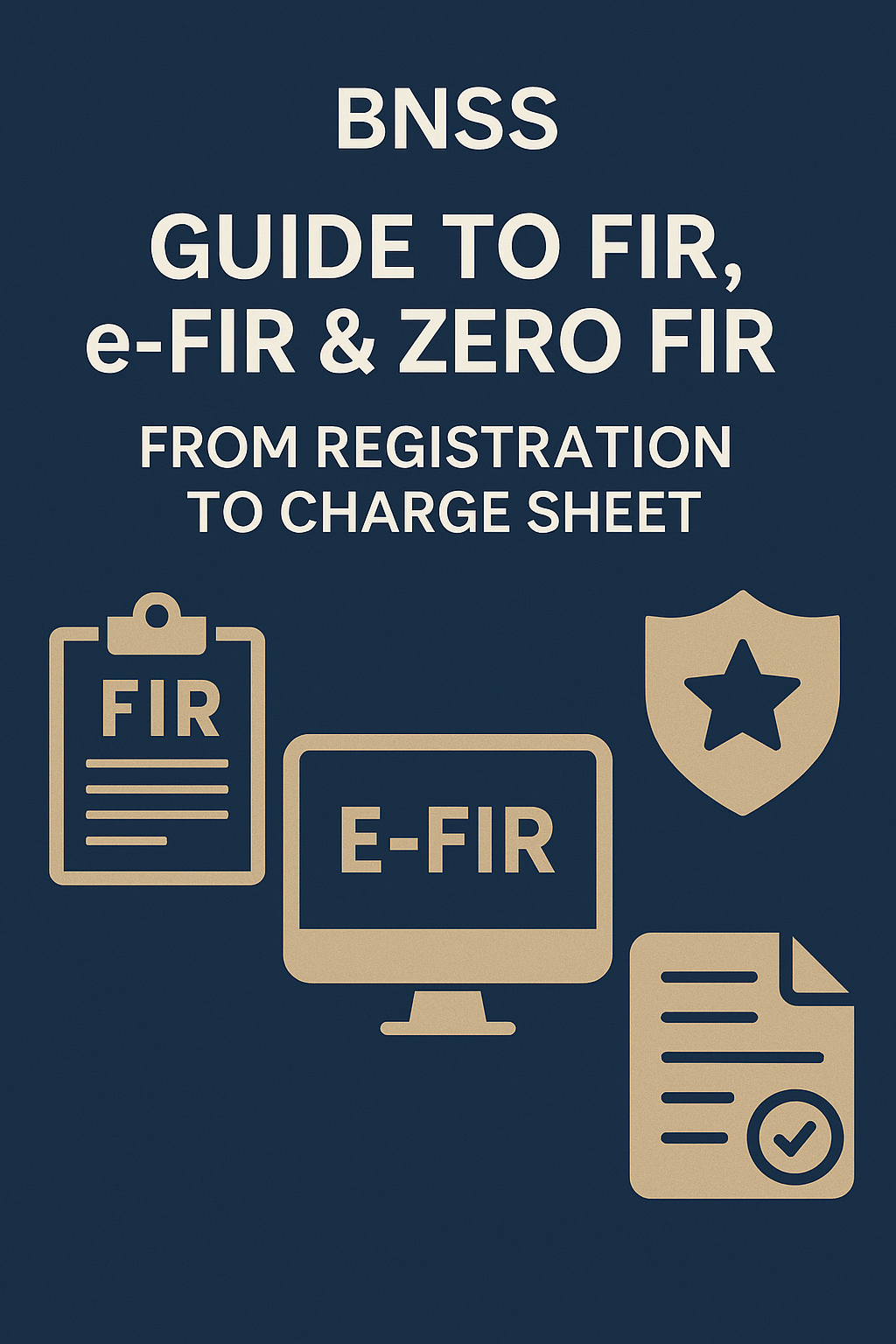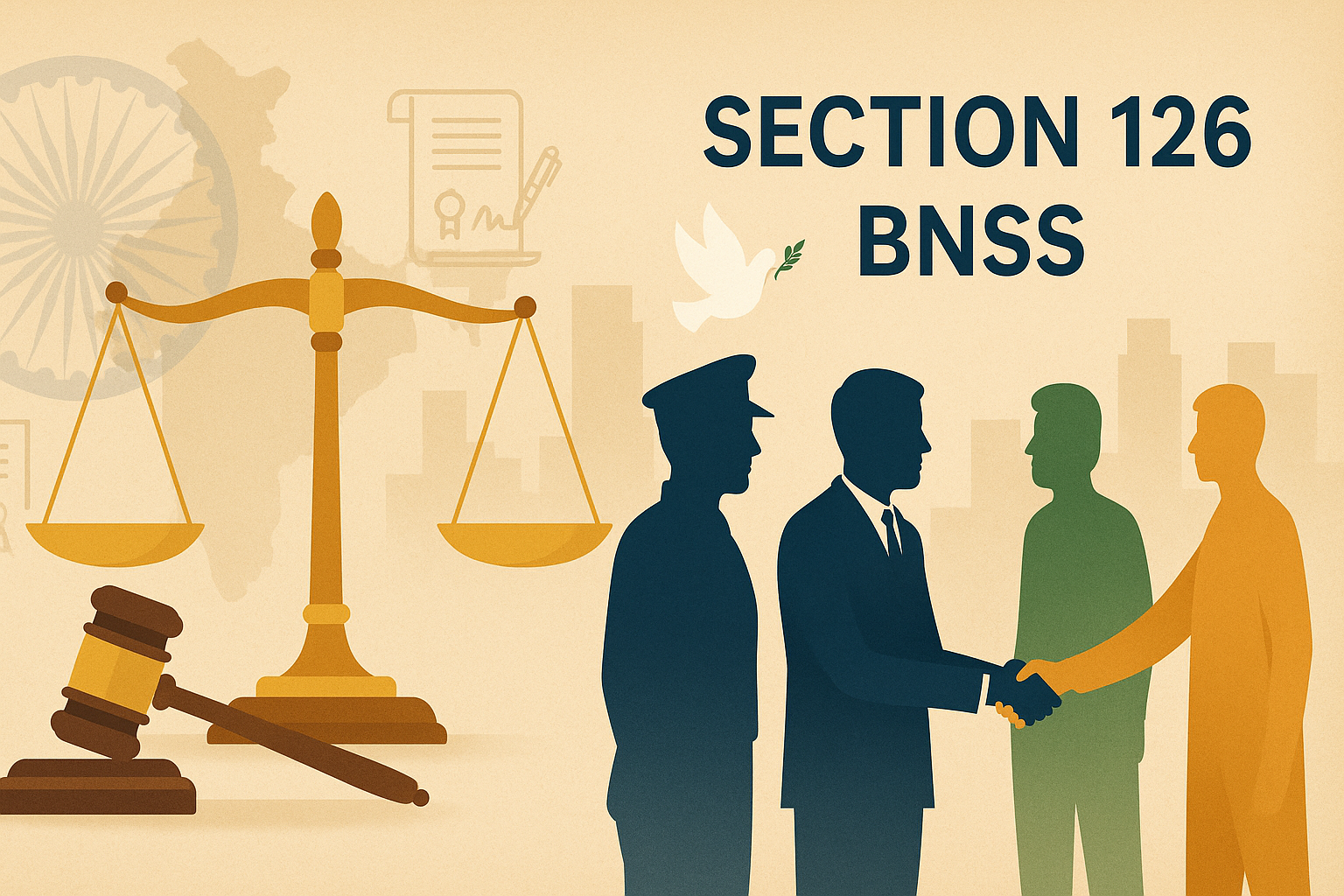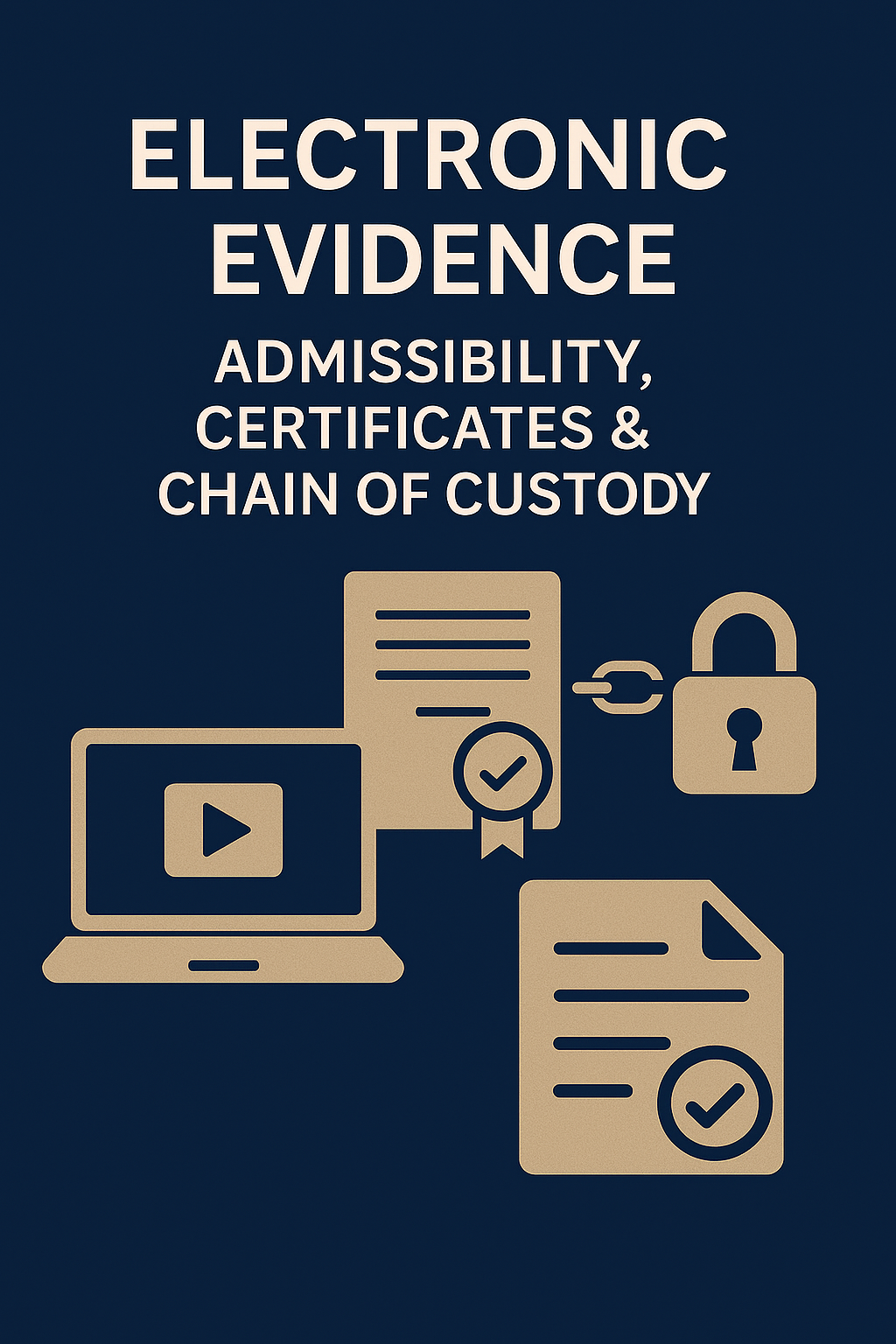BNSS Guide to FIR, e-FIR & Zero FIR: From Registration to Charge Sheet
Criminal Law › Criminal Procedure (BNSS)

Under the Bharatiya Nagarik Suraksha Sanhita (BNSS), the journey from complaint to charge sheet leans heavily on documentation, time-lines, and technology. Whether you are a complainant seeking registration of an FIR or a person named as an accused, understanding these milestones helps you act fast, avoid avoidable delays, and protect your rights.
What is an FIR under BNSS?
An FIR (First Information Report) is the written record of information relating to a cognizable offence given to the police. Once registered, police can investigate without seeking prior court permission. Non-cognizable offences require the police to seek a Magistrate’s order to investigate.
Key ideas:
- Reduced friction: BNSS supports electronic modes—information can often be given online or over approved channels, with the statement reduced to writing and signed/acknowledged.
- Duty to register: If the information discloses a cognizable offence, police should register the FIR and commence investigation.
- Jurisdiction: If the offence spans multiple places, FIR can be registered where any part of the offence occurred—BNSS also eases electronic transfer of information across stations.
e-FIR & Zero FIR in practice
- e-FIR: Many states now allow online initiation (particularly for certain categories) followed by in-person verification. BNSS embraces tech for complaint intake, e-summons, and e-records.
- Zero FIR: You may file an FIR at any police station irrespective of where the crime occurred. The receiving station numbers it as “zero” and transfers it to the jurisdictional station. This prevents loss of time and preserves evidence.
Pro tip: Always keep the acknowledgment number, date/time of registration, and a copy of your complaint and FIR. For transfers, track the forwarding memo; ask for the receiving PS details.
After FIR: immediate steps for complainants
- Statement & spot inspection: Police may record detailed statements and conduct spot inspection; cooperate and share documents, photos, or call logs.
- Medical/legal: In injury/sexual offence cases, insist on prompt medical exam and collection of forensic samples.
- Electronic evidence: Provide screenshots, device dumps, or server logs quickly; metadata gets overwritten with time.
- Sections applied: Check if the sections cited match the facts; if some acts are missing (e.g., intimidation/theft/digital fraud), request an addition with reasons.
For persons named as accused
- Get the FIR copy and the complaint that triggered it.
- Timeline awareness: Arrest is not automatic; BNSS encourages reasoned arrests and alternatives like notices to join investigation.
- Cooperate with investigation—produce documents, devices, or witnesses when asked; record all dates you appeared.
- Bail strategy: Depending on gravity and cooperation, seek interim or regular bail. If arrest is apprehended, explore anticipatory bail.
- Electronic devices: If devices are seized, request hash values, seizure memos, and cloned copies where permissible to preserve your defence.
Investigation milestones & timelines
- Sectioning & notices: Expect notices for appearance or production under the BNSS procedure. Non-compliance can escalate matters.
- Witness statements: Officer records statements; for sensitive witnesses, electronic or in-camera processes may be used.
- Forensics: Digital forensics and medical-legal opinions now arrive through standardized formats; keep tabs on pending reports.
- Final report (charge sheet/closure): On completing investigation, police file either a report seeking trial (charge sheet) or a closure report when evidence is insufficient. Complainants can oppose closure; accused can request copies.
Victim/complainant rights: Ask for updates on arrest/bail, copies of key documents, and notice before closure. Many steps can be received electronically under BNSS.
From charge sheet to framing of charge
Once the charge sheet is filed, the court supplies copies and hears arguments on charge.
- Discharge: If the materials do not disclose sufficient grounds, the accused can seek discharge.
- Framing of charge: If the court finds a case to proceed, it frames charges and the trial begins (prosecution evidence, cross-examination, defence evidence, arguments, judgment).
Timelines & tech: BNSS pushes for e-summons, video appearances where feasible, and stricter adherence to dates. Keep your email/phone updated in the case file to avoid missed notices.
Practical checklists
Complainant
- FIR copy + acknowledgment number
- Return memo for transferred Zero FIR (if any)
- Evidence kit: chats, emails, device serials, screenshots, CCTV clips, bank references
- Medical/legal documents where relevant
- List of witnesses and their contact details
- Track forensics (FSL) and follow up in writing
Accused
- FIR & complaint copy; any annexures
- Appearance notices and your attendance record
- Documents that rebut allegations (receipts, GPS logs, phone dumps, emails)
- Bail papers; surety documents; compliance with bail conditions
- Applications for cloned copies of seized data, when permissible

